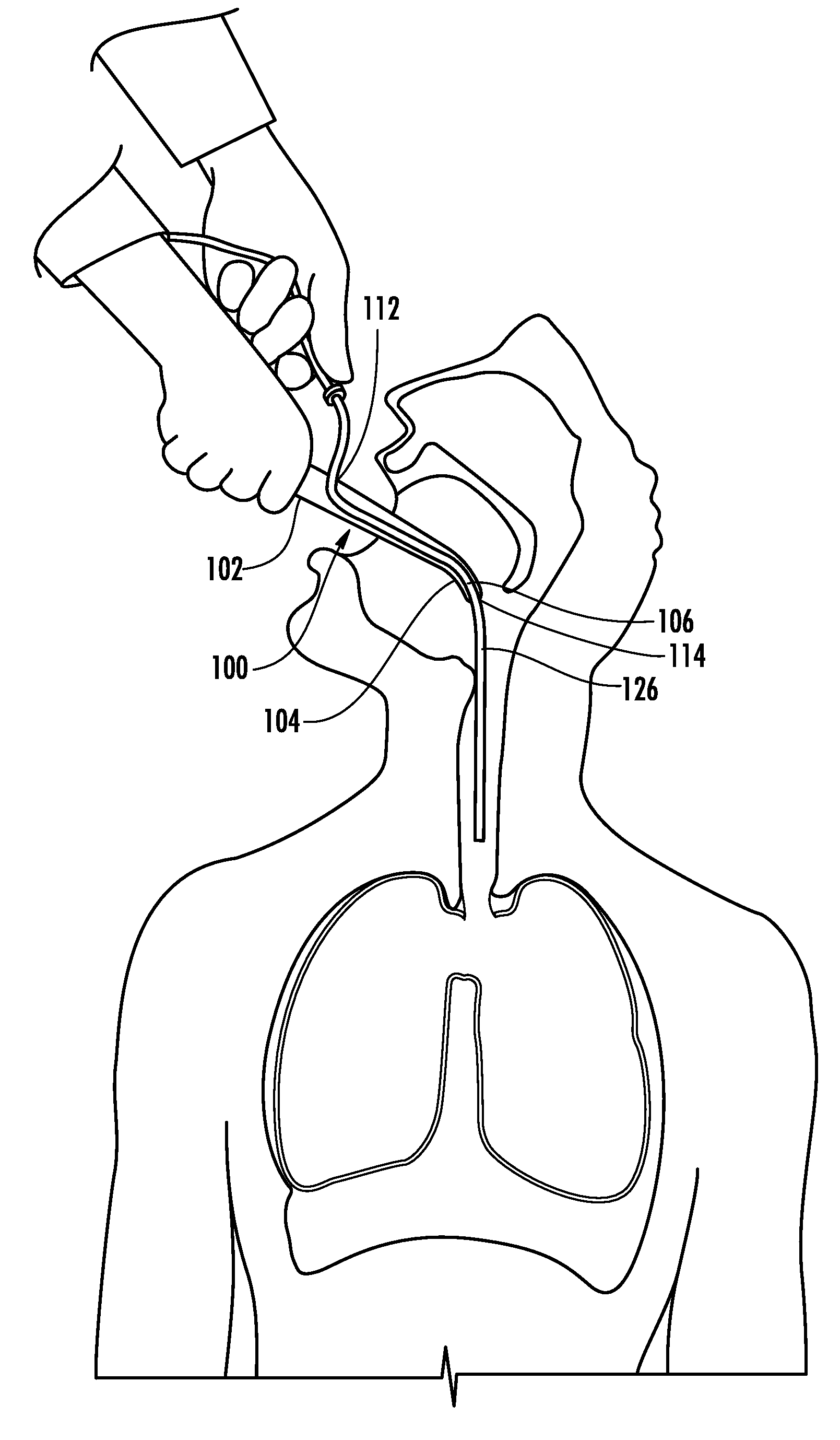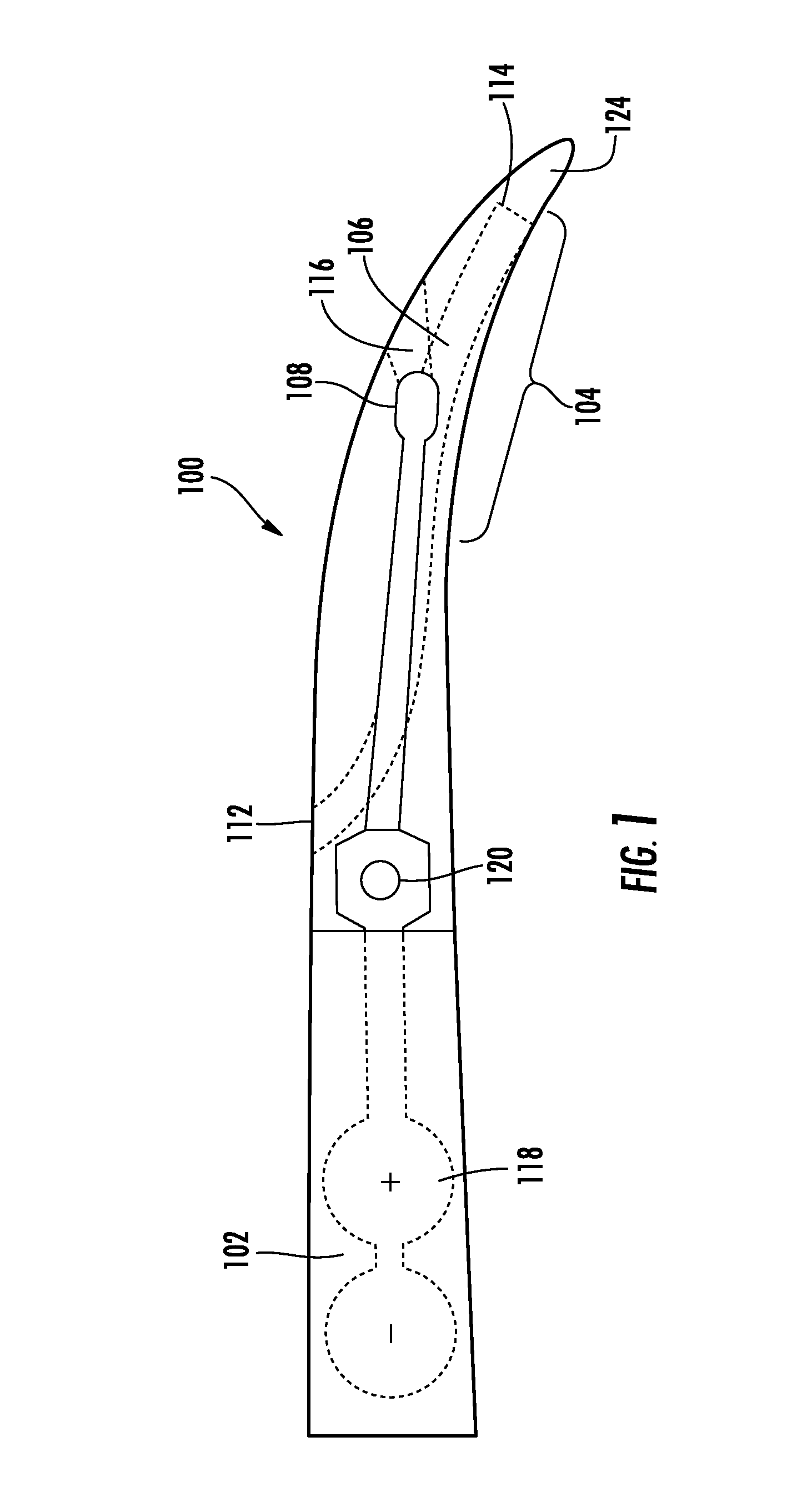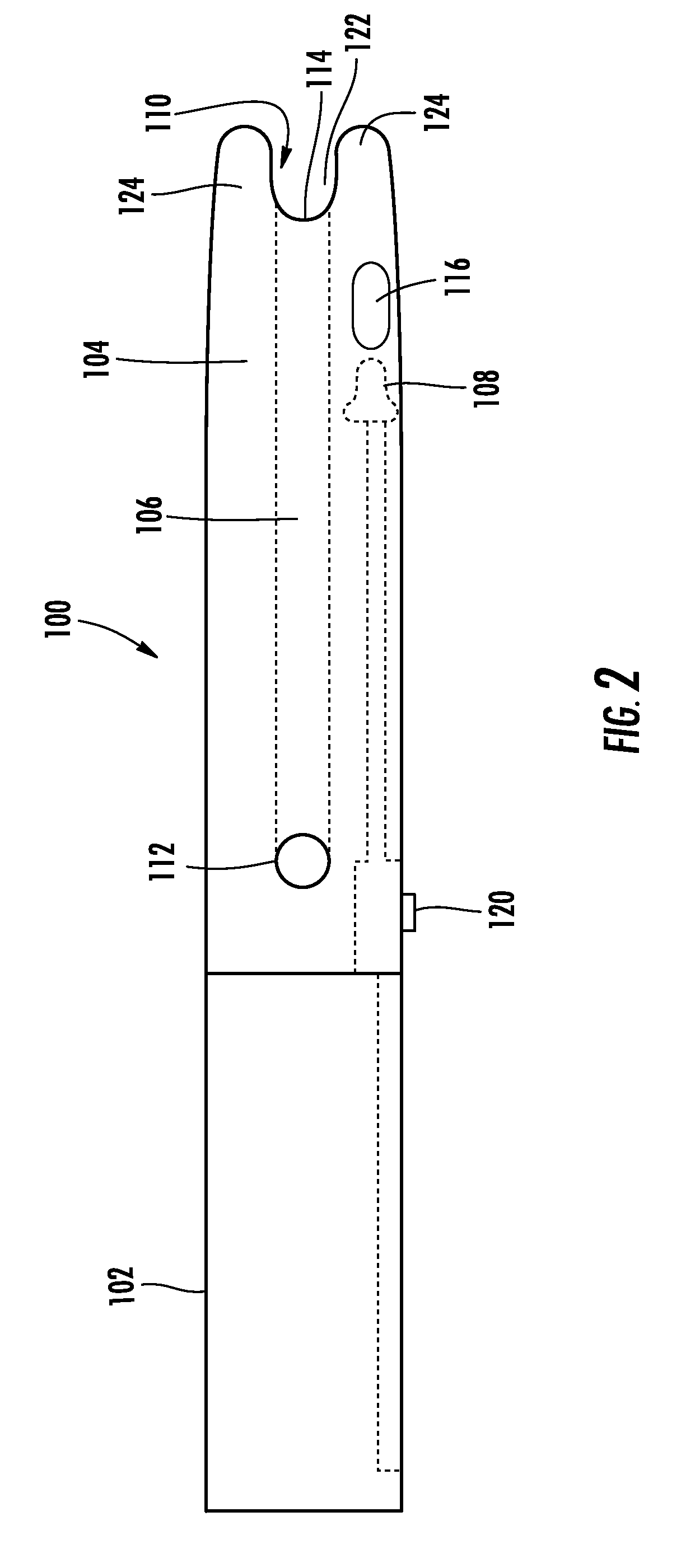Insertion aid device
a technology of insertion aid and insertion tube, which is applied in the field of insertion aid device, can solve the problems of triggering the patient's gag reflex, trauma and bleeding to the nasal area, and buildup of bacteria in patients who are unable to perform oral care, and achieves the effect of small cross-sectional shap
- Summary
- Abstract
- Description
- Claims
- Application Information
AI Technical Summary
Benefits of technology
Problems solved by technology
Method used
Image
Examples
Embodiment Construction
[0035]FIGS. 1-6 illustrate one embodiment of an insertion aid device 100. Alternative embodiments of the insertion aid device 100 are shown in FIGS. 7-19. The insertion aid device 100 comprises a handle 102, a tongue depressor 104, a first passageway 106, a light source 108, and a guide 110.
[0036]In the embodiments illustrated in FIGS. 1-19, the handle 102 may be constructed of a rigid material, such as plastic, steel, or any other suitable material. The handle 102 may have a circular cross-section or other suitable cross-sectional shape including but not limited to rectilinear, oval, crescent, triangular, pentagonal, hexagonal, octagonal, D-shaped, and I-shaped. However, one of skill in the relevant art will understand that the handle 102 may have any appropriate shape that allows a caregiver to use the insertion aid device 100 to accomplish the desired task without risk of injury to the patient or the caregiver. In some embodiments, the handle 102 may include a textured surface to...
PUM
 Login to View More
Login to View More Abstract
Description
Claims
Application Information
 Login to View More
Login to View More - R&D
- Intellectual Property
- Life Sciences
- Materials
- Tech Scout
- Unparalleled Data Quality
- Higher Quality Content
- 60% Fewer Hallucinations
Browse by: Latest US Patents, China's latest patents, Technical Efficacy Thesaurus, Application Domain, Technology Topic, Popular Technical Reports.
© 2025 PatSnap. All rights reserved.Legal|Privacy policy|Modern Slavery Act Transparency Statement|Sitemap|About US| Contact US: help@patsnap.com



